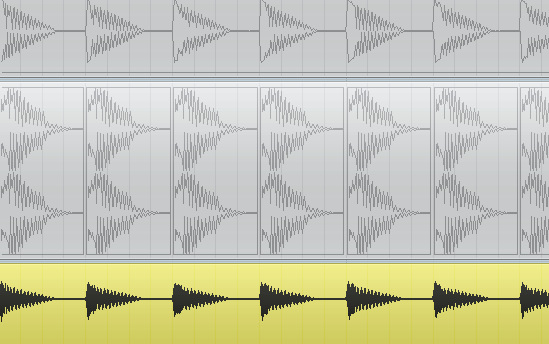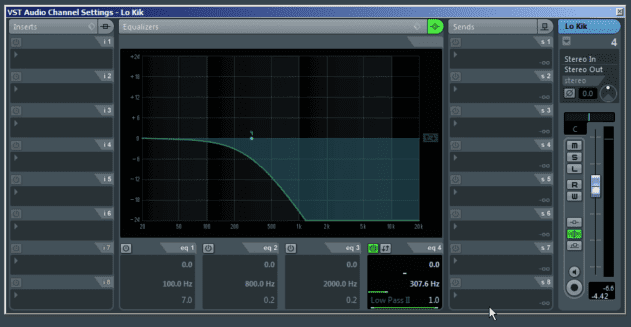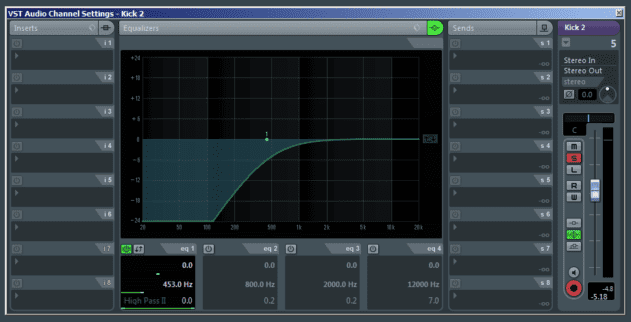Nip and Tuck
The second area where layered kick samples can be problematic is in terms of the frequency ranges they occupy. When we mix two or more signals together (whether they’re individual samples as in this case, or whether they’re bigger parts of a mix such as a drum loop and a bassline), we’re trying to find the best compromise which allows the sounds to sit together within a limited bandwidth. If frequencies overlap, this can be difficult, hence why we’ll often cut the overlapping frequencies from one sound in order to make space for the other (for further explanation of this concept, check out our recent walkthrough on the basics of EQing a mix).
The best solution when layering kicks follows exactly the same principles – we’ll use subtractive EQ in order to carve away the unwanted frequencies in each sound, making space for them to sit together.
In this case we’ll carve away the high frequencies of our first sample:
Audio Player Audio PlayerThen carve away the lower frequencies of our second sample:
Audio Player Audio PlayerThe two EQd samples sound much cleaner when layered than they did in their original form:
Audio PlayerOf course, there’s no reason why you should stop at layering just two kick samples. By following the same process once more, you can layer another one on top if you still think there’s something missing. Two or three carefully chosen samples are usually sufficient to get the desired blend of low-end boom, midrange body and top-end click.
For a better idea of the various types of kick drum – and the elements that combine to shape them – it also pays to listen to kicks in the context of a track as well as on their own. Those descriptive terms like ‘boom’, ‘weight’, ‘click’ and ‘knock’ often make more sense in the context of a full mix.



04.26 PM
Thanks for sharing this. Is it common to use stereo kick samples? I always track my kicks out of my drum machine in mono.
04.34 PM
Hi Joel. Generally speaking, it’s best to keep lower frequencies in mono for a variety of reasons (we find it very difficult to perceive the stereo position of low frequencies and keeping low frequencies in mono allows you to use the full bandwidth of each stereo channel for maximum impact – very important for kicks).
Keeping your kicks in mono is definitely the safest approach, although there are cases where including some stereo information in the higher frequencies of the kick can also work well. Try experimenting with layering stereo sounds to add the ‘click’ on top of a mono kick, for example.
01.16 AM
that inverting phase thing is genious. thanks for the tip. i just tried it. wow!
05.35 PM
Hi, how to inverting phase in Ableto Live? tnx in advance
03.06 AM
Merzad,
Phase cancellation in Ableton Live can be found in the Utility plugin, which also features gain control, a mono-stereo mixer and the voice of god.
07.01 PM
i think in a club or in a crowd ,there will be no mono_stereo difference,someone answer me if i’am wrong,i’am just a trance listener
12.28 AM
This is great information for beginners in kick drum design and will save them alot of time and pain !
I am having trouble finding additional layers to add size, thickness, texture and character in the mids. For example, a classic TR707 top kick is brilliant for its punchy characteristics but even with various mix processing, it can still sound quite small and thin compared to modern layered kicks by top producers.
Where would you go from this point ? (sub and hi freq layer is done)